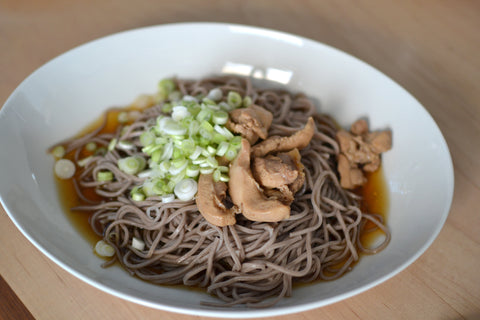
This month's sakes are all from Yamagata Prefecture, to belatedly celebrate that Yamagata's sakes were granted Geographical Indication (G.I.) last December. So alongside Bordeaux wine, Darjeeling tea and Tuscan olive oil, Yamagata sakes are now recognized as a product that originates from a specific geographic location. This is the first time a sake has been granted G.I. status.
What makes a Yamagata sake unique? The prefecture declared their sakes to be, "brewed for softness and clarity.” Like many things in Japanese promotion speak, this seems a little vague. Don't many sake brewers from other regions also revere softness and clarity? After trying many Yamagata sakes I did notice that many were quite bright with a crisp acidity, which may be the “clarity” that they are referring to.
The relationship between sake and rice is often geographically spread apart. So if a sake brewer in Hokkaido (the northernmost prefecture) uses a rice from Hyogo which is nearly 1000 miles away, the sake suffers no consequence to its authenticity or marketability of it being a Hokkaido sake.
Given the above, I think the most interesting thing about Yamagata sake makers is that they often use local rice that can only be grown in Yamagata - so the sake is 100% born and raised in one prefecture. You may recognize some of the following rice types that are native to Yamagata: Miyama Nishiki, Kame no O, Dewa Sansan, Dewa no Sato. In fact all of the sakes in Sake Gumi this month use rice that was grown in Yamagata.
So, like estate wines, where the winemaker has complete control over how they grow the grapes to fit their style of winemaking, sake brewers in Yamagata (who often do not own rice fields themselves) can communicate directly with the rice growers in their region to develop the best crop for their sakes. One could also argue that a sake made with local rice would exhibit a high quality of the region's terroir.
I am celebrating Yamagata's Geographic Indication by also exploring some of regional dishes from Yamagata. So far, I've made Niku Soba and Natto Jiru. My version of Niku Soba can be found here. Enjoy!
LEVEL 1: Introductory Membership (Two 300ml bottles)
 Onikarakuchi Junmai
Onikarakuchi JunmaiChiyokotobuki Toraya Co., Ltd (Yamagata, Japan)
Seimaibuai: 70%, SMV: +10
Onikarakuchi translates as “extra dry demon.” Despite this intimidating title, I didn’t perceive this sake to be that dry – perhaps because the dryness is offset with the rich aroma of roasted peaches, and the full flavor of umami. This sake is made using a Yamagata rice called Haenuki, which is known to be big in grain size and full in flavor. Enjoy this full-bodied sake at room temperature with Niku Soba or nutty flavors like sesame dressing or pesto sauce.
 Gin Sumiyoshi "Silver Cap" Tokubetsu Junmai
Gin Sumiyoshi "Silver Cap" Tokubetsu Junmai
Taruhei Brewery (Yamagata, Japan)
Seimaibuai: 60%, SMV: +5
Another dry sake from Yamagata, this brew is made using a local rice called Sasa Nishiki, which is slightly lighter and less sticky than the Haenuki above. Taruhei Brewery prides itself on preserving traditional brewing techniques such as using wood tools for brewing and only makes junmai (pure rice) sakes. Gin Sumiyoshi is un-charcoal filtered, hence a slight amber hue. Enjoy its high acidity at 2.0, highlighted by a sharp, minty flavor since it is aged in cedar barrels. Try chilled or slightly warm with meaty or spicy foods like, chips and salsa, chicken wings or burgers.
LEVEL 2: Premium Membership (Two 720ml bottles)
 Hiyagakoi Junmai Ginjo Nama
Hiyagakoi Junmai Ginjo Nama Chiyokotobuki Toraya Co., Ltd (Yamagata, Japan)
Seimaibuai: 55%, SMV: +3
Both of the sakes in Level Two come from the same brewer and both are junmai ginjos. The difference between the two are in the rice type used, fermentation and pasteurization methods. This sake uses Dewa 33 rice, is fermented at a very low temperature for a longer time than the sake below, and is pasteurized only once. This results in a mellow and sweet cantaloupe taste with a signature ginjo fruitiness. Great as an aperitif on its own or with a bowl of pecans. Store and serve chilled.
 Kurakakushi Junmai Ginjo
Kurakakushi Junmai Ginjo
Chiyokotobuki Toraya Co., Ltd (Yamagata, Japan)
Seimaibuai: 50%, SMV: +2
For this sake, the head brewer works directly with a local farmer to cultivate pesticide-free Miyama Nishiki rice that is ideal for making a super smooth junmai ginjo, with a viscous mouth feel and clean finish. Less fruity than the above nama and with a more subdued nose, this sake is food pairing friendly. I love the ricey umami that opens up as it enters the palette. A sake that reveals itself glass after glass! Try this smooth sake chilled or at room temperature with shoyu ramen or the Niku Soba recipe on our blog.




Comments (0)
There are no comments for this article. Be the first one to leave a message!